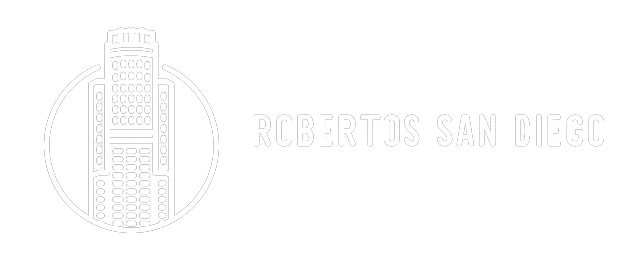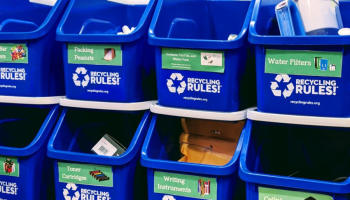California, with its diverse landscapes and vibrant cities, faces significant pollution challenges that impact both the environment and public health. The state’s rapid urbanization, industrial activities, and transportation demands contribute to various forms of pollution. Understanding these environmental challenges is crucial for taking effective measures to protect California’s natural beauty and the well-being of its residents.
Water Pollution
Water pollution is a pressing concern in California, especially in water bodies impacted by urban runoff and agricultural practices. The state has enacted strict regulations to safeguard water quality, implemented stormwater management practices, and promoted sustainable farming techniques to minimize water pollution.
Plastic Pollution
California, being a coastal state, faces the challenge of plastic pollution in its oceans and beaches. Single-use plastics, such as bottles, bags, and straws, contribute to marine litter and harm marine animals. The state has taken significant steps to address plastic pollution, including bans on single-use plastic bags and foam containers. Efforts to promote recycling and raise awareness about plastic waste’s impact continue to be a priority.
Waste Management
Proper waste management is essential for minimizing pollution. California generates substantial amounts of waste, and improper disposal can lead to environmental degradation and public health risks. The state has been proactive in promoting waste reduction, recycling, and composting programs. Waste-to-energy facilities play a role in diverting waste from landfills while generating renewable energy.
Noise Pollution
Urban areas in California experience high levels of noise pollution due to traffic, industrial activities, and other human-made sources. Prolonged exposure to noise pollution can lead to stress, sleep disturbances, and other health issues. The state has been working to mitigate noise pollution through urban planning, sound barriers, and noise regulation enforcement.
Light Pollution
Light pollution, caused by excessive artificial lighting, affects stargazing, disrupts ecosystems, and impacts wildlife behavior. California has adopted measures to control outdoor lighting, promoting dark-sky-friendly practices to reduce light pollution and conserve energy.
Environmental Justice
Addressing pollution-related disparities is a crucial aspect of California’s environmental efforts. Low-income communities and minority populations often face a disproportionate burden of pollution and its health effects. The state is working to promote environmental justice by considering equity in environmental policies and investing in underserved communities’ environmental protection.
California and cities like Santa Ana face various pollution challenges that require sustained efforts and collaboration from government, industries, communities, and individuals. Striving for cleaner air, water, and land, reducing plastic pollution, managing waste responsibly, addressing climate change, and promoting environmental justice are essential steps in preserving California’s natural beauty and safeguarding the well-being of its residents. Through continued commitment to environmental protection and sustainable practices, California can pave the way towards a cleaner and healthier future for generations to come.
Recycling Initiatives by the City of Santa Ana, CA: Leading the Way Towards Sustainability
In recent years, Santa Ana has made significant strides in implementing recycling initiatives to tackle waste management challenges and reduce its environmental footprint. These initiatives reflect the city’s commitment to promoting recycling, waste diversion, and a more sustainable future. In this article, we will explore some of the key recycling initiatives undertaken by the city of Santa Ana.
Comprehensive Curbside Recycling Program
Santa Ana boasts a robust curbside recycling program that serves residents and businesses throughout the city. The program accepts a wide range of recyclable materials, including paper, cardboard, glass, plastics, and metal. By providing convenient recycling collection services, Santa Ana encourages its residents to actively participate in recycling efforts and reduce the amount of waste sent to landfills.
Green Waste and Composting Program
In addition to traditional recycling, Santa Ana has also implemented a green waste and composting program. Yard trimmings, food scraps, and other organic materials are collected separately and composted. This initiative diverts organic waste from landfills, reduces greenhouse gas emissions, and produces nutrient-rich compost that can be used to enrich soils and promote sustainable agricultural practices.
Recycling Education and Outreach
Recognizing the importance of public awareness and education, Santa Ana actively engages the community through recycling education and outreach programs. The city conducts workshops, distributes educational materials, and hosts events to inform residents about proper recycling practices, waste reduction, and composting. By empowering individuals with the knowledge to recycle effectively, Santa Ana aims to maximize recycling rates and improve overall waste management.
Single-Use Plastic Reduction
Santa Ana has taken proactive steps to combat plastic pollution by addressing single-use plastics. The city has implemented bans and restrictions on single-use plastic bags and foam containers to reduce their environmental impact. This initiative encourages the use of reusable alternatives and discourages the consumption of disposable plastics that contribute to marine litter and harm wildlife.
Electronic Waste Recycling
To tackle the growing issue of electronic waste (e-waste), Santa Ana offers residents and businesses convenient e-waste recycling options. Electronics contain valuable materials but can also pose environmental hazards if not disposed of properly. By promoting responsible e-waste recycling, the city prevents hazardous materials from ending up in landfills and encourages the recovery of valuable resources.
Green Business Certification Program
Santa Ana’s Green Business Certification Program recognizes and supports businesses that demonstrate a commitment to sustainable practices, including recycling and waste reduction. Participating businesses are provided with resources and guidance to enhance their sustainability efforts, contributing to a greener business community.
Collaborations and Partnerships
To further strengthen its recycling initiatives, Santa Ana collaborates with various stakeholders, including local businesses, community organizations, and regional waste management agencies. By fostering partnerships, the city can leverage resources and expertise to implement innovative recycling programs and address waste management challenges effectively.
Santa Ana stands out as a model city when it comes to recycling initiatives and environmental stewardship. Through comprehensive curbside recycling, green waste and composting programs, recycling education and outreach, single-use plastic reduction, e-waste recycling, green business certification, and collaborative efforts, Santa Ana showcases its commitment to sustainability and waste diversion. These recycling initiatives not only contribute to reducing the city’s environmental impact but also serve as an inspiration for other communities seeking to adopt sustainable practices and create a greener, more environmentally conscious future.
List of Sources
- https://ww2.arb.ca.gov/resources/health-air-pollution
- https://www.nbcnews.com/health/health-news/california-sees-air-pollution-spike-national-levels-improve-rcna80065
- https://www.santaanadumpsterrental.net/
- https://www.robertossandiego.net/waste-reduction-behaviors-at-home/
- https://www.robertossandiego.net/what-can-you-put-in-a-dumpster/





